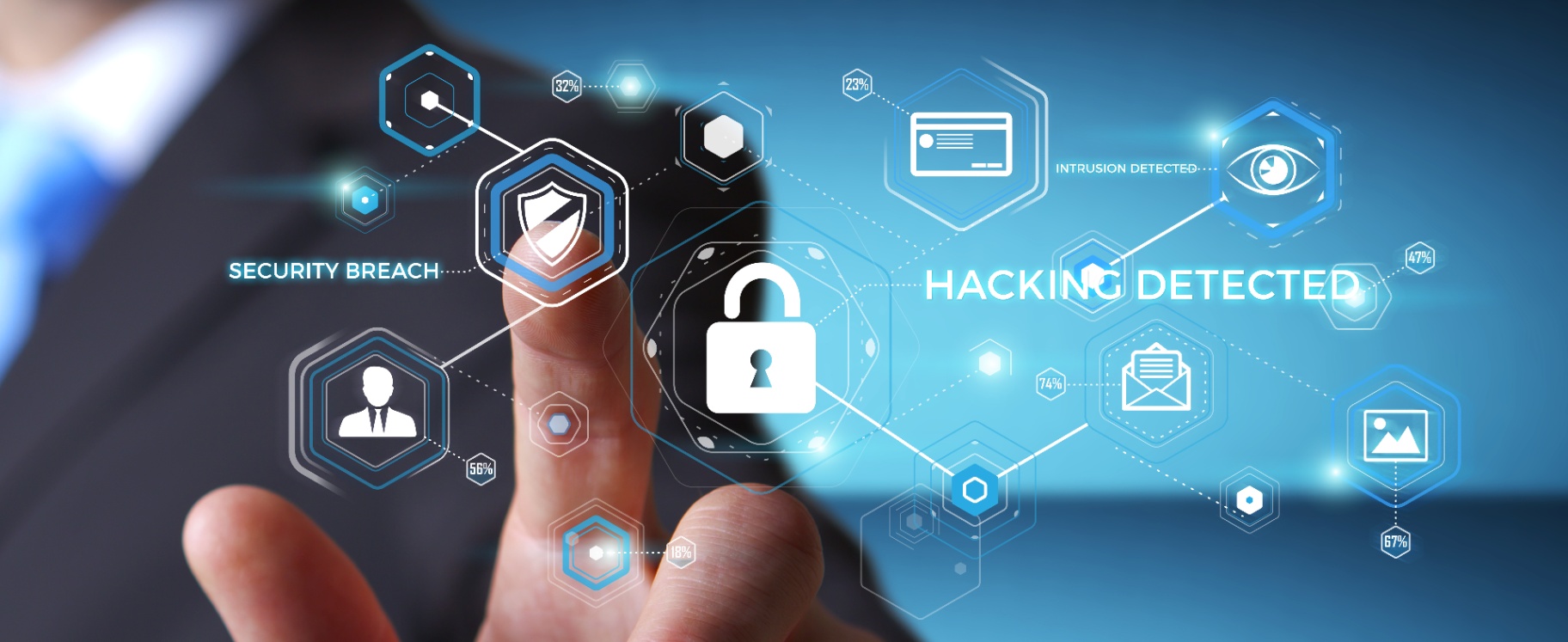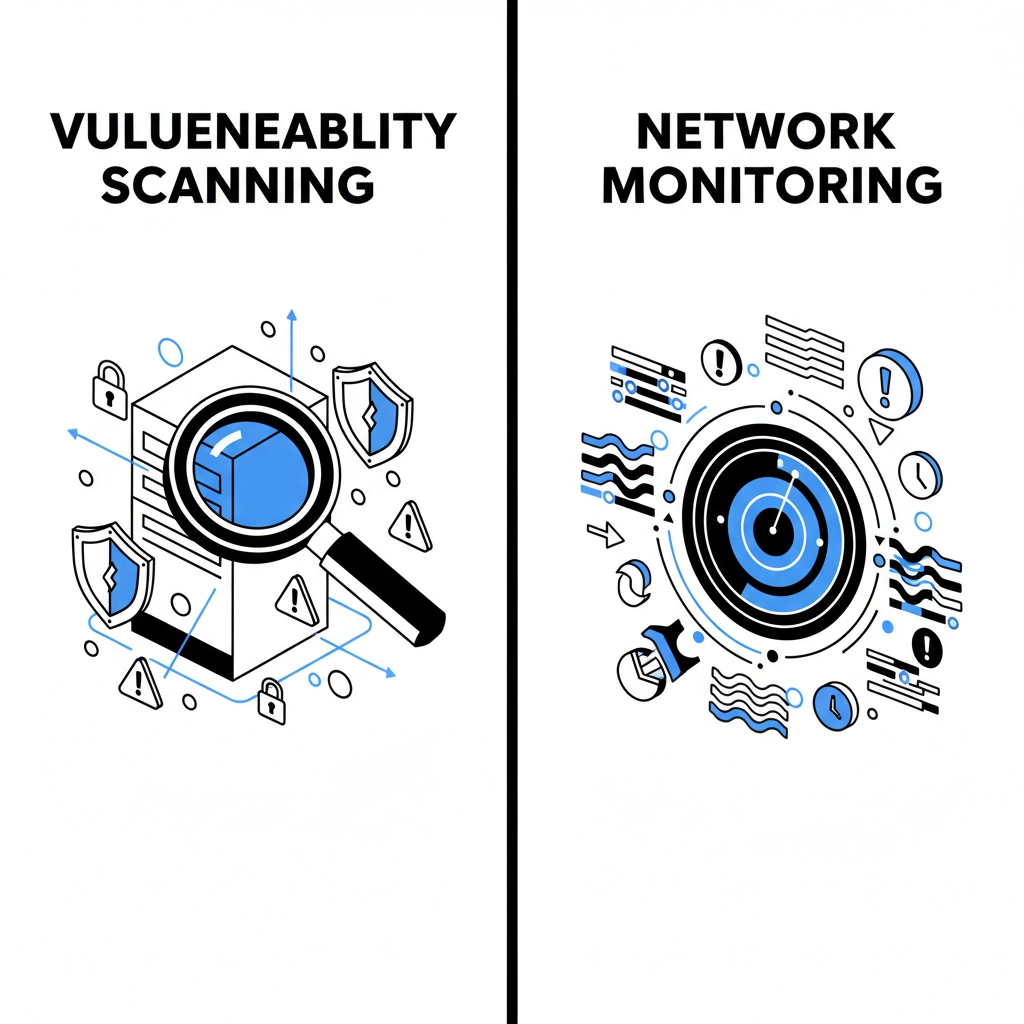If you're running a small business in 2025, cybersecurity isn't just nice to have: it's absolutely critical for survival. But with limited budgets and resources, choosing the right security approach can feel overwhelming. Two essential cybersecurity strategies often compete for your attention and budget: vulnerability scanning and network monitoring.
Here's the thing: both are crucial, but they work in completely different ways. Think of vulnerability scanning as your security health checkup: it identifies weak spots before hackers find them. Network monitoring, on the other hand, is like having a security guard watching your digital front door 24/7, ready to sound the alarm when trouble shows up.
So which one should you prioritize? Let's break down both approaches and help you make the best decision for your business.
Understanding Vulnerability Scanning: Your Proactive Security Shield

Vulnerability scanning is your first line of defense: a proactive approach that hunts for security weaknesses in your systems, networks, and applications before cybercriminals can exploit them. Think of it as a comprehensive security audit that runs automatically, scanning every corner of your digital infrastructure for potential entry points.
The Power of Getting Ahead of Threats
The beauty of vulnerability scanning lies in its preventive nature. Instead of waiting for something bad to happen, it identifies problems before they become disasters. Modern vulnerability scanners can detect thousands of known security flaws, from unpatched software to misconfigured systems.
For small businesses, this approach is particularly valuable because it provides detailed reports with severity levels. You're not just getting a list of problems: you're getting a prioritized action plan. Critical vulnerabilities that could lead to data breaches get flagged first, while lower-risk issues can be addressed when time permits.
Compliance Made Simple
If your business handles sensitive data: and let's be honest, most do these days: vulnerability scanning isn't just smart, it's often required. Regulations like SOC 2, ISO 27001, and PCI DSS typically mandate regular vulnerability assessments. Our vulnerability scanning services help ensure you're not just protected, but compliant too.
Cost-Effective Protection
For budget-conscious small businesses, vulnerability scanning offers excellent bang for your buck. The automated nature of modern scanners means you get enterprise-level security assessment without enterprise-level costs. Plus, preventing a security incident is always cheaper than dealing with the aftermath of a breach.
Network Monitoring: Your Real-Time Security Guardian

While vulnerability scanning looks for potential problems, network monitoring focuses on what's happening right now. It's your digital security camera system, constantly watching network traffic and ready to spot suspicious activity the moment it occurs.
Always-On Protection
Network monitoring never sleeps. It provides continuous, real-time visibility into your network traffic, analyzing every packet of data flowing through your systems. When something doesn't look right: whether it's a phishing attempt, DDoS attack, or ransomware trying to encrypt your files: network monitoring can detect it immediately.
This real-time capability is crucial in 2025's threat landscape. Cybercriminals are faster and more sophisticated than ever, and sometimes you only have minutes to respond before significant damage occurs.
AI-Powered Threat Detection
Modern network monitoring systems leverage artificial intelligence to spot patterns that humans might miss. These AI-powered systems can identify new types of cyber attacks, even ones that haven't been seen before. Research shows that AI-enhanced monitoring can find breaches 70% faster than traditional methods, potentially saving your business over $1.7 million on average.
Performance Benefits Beyond Security
Here's a bonus: network monitoring doesn't just protect against threats: it also optimizes your network performance. By identifying bottlenecks, unusual traffic patterns, and system inefficiencies, our network monitoring services can help reduce downtime and keep your business running smoothly.
Head-to-Head: The Key Differences

Let's get practical about the differences between these two approaches:
| Aspect | Vulnerability Scanning | Network Monitoring |
|---|---|---|
| Primary Purpose | Identifies potential security weaknesses | Detects active threats and suspicious activity |
| Timing | Periodic assessments (weekly, monthly, quarterly) | Continuous real-time monitoring |
| Approach | Proactive prevention | Reactive detection and response |
| Best For | Finding security gaps before they're exploited | Catching attacks as they happen |
| Compliance Value | High – meets many regulatory requirements | Moderate – supports incident response requirements |
| Implementation Cost | Lower upfront and ongoing costs | Higher ongoing operational costs |
| Response Time | Scheduled remediation based on scan results | Immediate alerts and response capabilities |
| Threat Coverage | Known vulnerabilities and security misconfigurations | All network traffic and behavioral anomalies |
Making the Right Choice for Your Business

The truth is, the "better" choice depends entirely on your specific situation. Here's how to decide:
For Budget-Conscious Small Businesses
If you're just starting to build your cybersecurity strategy and budget is tight, vulnerability scanning should be your first investment. It provides excellent preventive value at a reasonable cost, and many insurance companies now require regular vulnerability assessments for cyber liability coverage.
Start with monthly scans, focusing on external-facing systems and critical internal infrastructure. As your budget grows, you can increase scanning frequency and expand coverage.
For Businesses Handling Sensitive Data
If you process customer payment information, health records, or other sensitive data, network monitoring becomes critical. Real-time threat detection can mean the difference between a minor security incident and a major data breach that destroys customer trust and triggers regulatory fines.
Industries like healthcare, finance, and e-commerce should prioritize network monitoring for its immediate response capabilities.
For Maximum Protection
The most effective approach combines both strategies in a layered security framework. Use vulnerability scanning to identify and fix security weaknesses on a regular schedule, while maintaining continuous network monitoring for real-time threat detection and response.
This combination addresses both prevention and detection, creating a comprehensive security posture that's much harder for attackers to penetrate.
The Bottom Line: Why Not Both?

Here's what we've learned from working with hundreds of small businesses: the most successful security strategies don't rely on just one approach. Vulnerability scanning and network monitoring work best together, each covering the other's blind spots.
Vulnerability scanning tells you where you're vulnerable, while network monitoring tells you when you're under attack. One prevents problems, the other responds to them. Both are essential for comprehensive protection in 2025's evolving threat landscape.
If you absolutely must choose one due to budget constraints, consider your industry, regulatory requirements, and risk tolerance. But remember: investing in cybersecurity today is always cheaper than dealing with a security breach tomorrow.
The cyber threats facing small businesses aren't getting simpler or less frequent. By understanding the strengths and limitations of both vulnerability scanning and network monitoring, you can make informed decisions that protect your business, your customers, and your reputation.
Ready to strengthen your cybersecurity posture? Contact FoxPowerIT to discuss which approach: or combination of approaches: makes the most sense for your business. We'll help you build a security strategy that fits your budget and protects what matters most.

